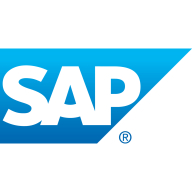

MuleSoft Anypoint Platform and SAP Process Orchestration compete in the integration platform market. MuleSoft has an edge with its extensive API management and versatile deployment capabilities, whereas SAP Process Orchestration offers strong SAP ecosystem integration with less reliance on external connectors.
Features: MuleSoft Anypoint Platform provides comprehensive API management and iPaaS solutions with over 200 connectors for seamless integration with popular applications like Salesforce and SAP. Key features include robust API management, security policies, and visual development interfaces. SAP Process Orchestration focuses on strong native connectors for SAP environments, offering extensive integration possibilities within SAP ecosystems and includes native process integration capabilities.
Room for Improvement: MuleSoft users highlight the need for improvement in pricing, support response times, and complexity of documentation and initial setup. Cloud integration options are also noted as lacking. SAP Process Orchestration users face challenges with modernizing interfaces and integrating non-SAP systems. Its monitoring system is seen as overly technical, requiring deep technical expertise, and the transition towards SAP Cloud Integration demands adaptation to new systems.
Ease of Deployment and Customer Service: MuleSoft supports deployment in Public, Private, and Hybrid Cloud environments, offering broad flexibility. Its customer service is generally responsive but varies in quality. SAP Process Orchestration primarily operates on-premises, with limited Hybrid Cloud support, resulting in less adaptability. SAP's dedicated support team is noted, yet the process can slow responses.
Pricing and ROI: MuleSoft's licensing model is complex and perceived as expensive for smaller entities, though it offers high ROI for larger enterprises by reducing middleware costs. SAP Process Orchestration has competitive pricing for medium-scale operations, but the cost for larger implementations is high. It provides significant ROI in SAP environments, yet the cost might limit broader adoption outside SAP-focused businesses.
| Product | Market Share (%) |
|---|---|
| MuleSoft Anypoint Platform | 10.6% |
| SAP Process Orchestration | 6.4% |
| Other | 83.0% |


| Company Size | Count |
|---|---|
| Small Business | 21 |
| Midsize Enterprise | 12 |
| Large Enterprise | 29 |
| Company Size | Count |
|---|---|
| Small Business | 8 |
| Midsize Enterprise | 3 |
| Large Enterprise | 26 |
MuleSoft Anypoint Platform provides API management and integration capabilities with scalability, ensuring seamless connectivity across systems.
MuleSoft Anypoint Platform offers API management and integration capabilities within a user-friendly interface. With a range of connectors and the ability to handle integration patterns, it enables data integration across environments with support for API-led connectivity. High scalability, observability, batch processing, and tooling are key features, enhancing performance while simplifying deployment.
What are the standout features of MuleSoft Anypoint Platform?MuleSoft Anypoint Platform is employed by organizations for API management and seamless integration across systems in industries like retail and e-commerce. It connects enterprise applications in environments such as SAP and Salesforce. Users leverage it for data transformation and synchronization, achieving efficient real-time processing and a middleware layer across systems.
We monitor all Business-to-Business Middleware reviews to prevent fraudulent reviews and keep review quality high. We do not post reviews by company employees or direct competitors. We validate each review for authenticity via cross-reference with LinkedIn, and personal follow-up with the reviewer when necessary.